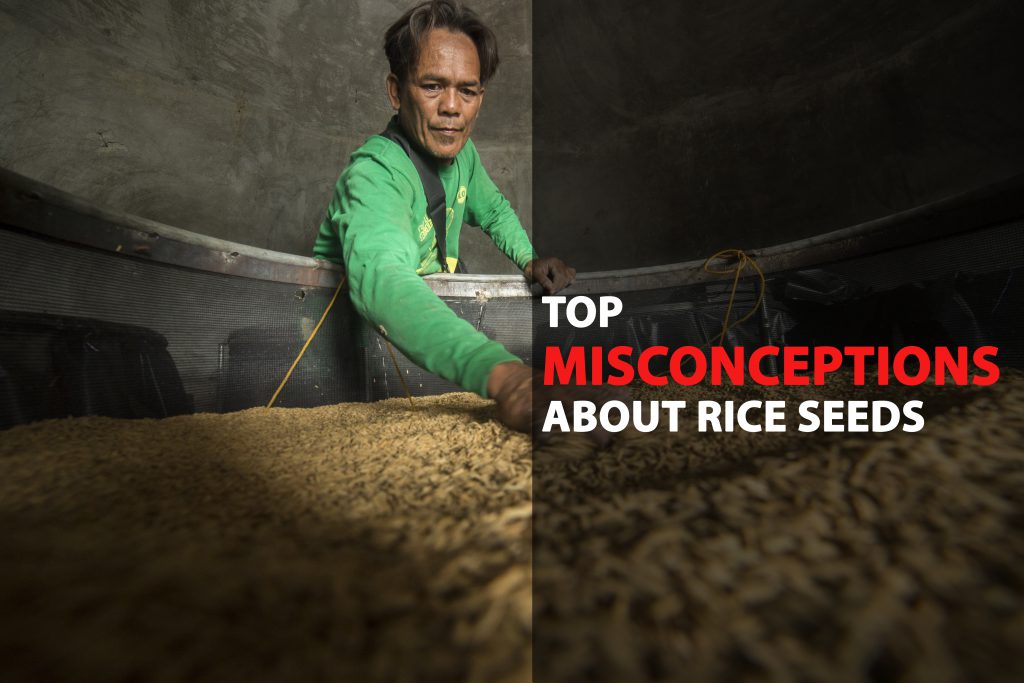
Bountiful harvest starts from good seeds. However, potentials of rice seeds are not optimized owing to misconceptions. Here are the top misunderstandings about rice seeds and a version of truth:
Misconception #1: All rice varieties are suitable everywhere.
There are over 300 inbred and hybrid Philippine rice varieties bred based on certain conditions. Their suitability depends on environment, planting season, and field conditions. Each variety is unique as it is bred for irrigated lowland, rainfed, saline-prone, submergence, and low and high temperature.
NSIC Rc 222 or Tubigan 18 is recommended in Central Luzon for dry and wet season; NSIC Rc 402 for bacterial leaf blight-stricken areas; and NSIC Rc 194 for flood-prone areas.
With the vast number of options, farmers have to choose varieties wisely to reap abundantly.
Misconception #2: The more seeds planted, the higher the yield.
At a planting distance of 20 x 20cm, experts estimate that farmers only need 750,000 seedlings per hectare. How much seed then is needed to produce this number of seedlings?
PhilRice recommends a seeding rate of 20-40kg/ha for inbred rice seeds. A 40kg-bag contains 1.8M seeds and has a germination rate of 85%. This means that at least 1.5M of seedlings can grow out of a 40kg-bag of seeds! That is double the needed number of seedlings per hectare!
“Added to that, sowing the right amount of seeds allows enough space for seedlings to grow strong and healthy,” Oliver Manangkil, PhilRice breeder explained. It will surely help farmers cut on seed cost.
Misconception #3: Rice seeds as planting materials can be stored for a year.
Experts recommend that rice seeds must be planted immediately. In six or more months, seed germination decreases; thus, the potential of the seed to develop also decreases.
PhilRice agriculturist Fredierick Saludez said that farmers need to dry their rice seeds properly to ensure that its germination rate will remain high until the next planting season. Seeds to be stored must maintain at least 12% moisture content, and stored in a dry, air-tight container.
“They can either use saklob or thwart bags as storage boxes for their seeds. Recycled biscuits tin cans may also be used. Just seal them with candle drops to prevent moisture from breaking in,” he added.




